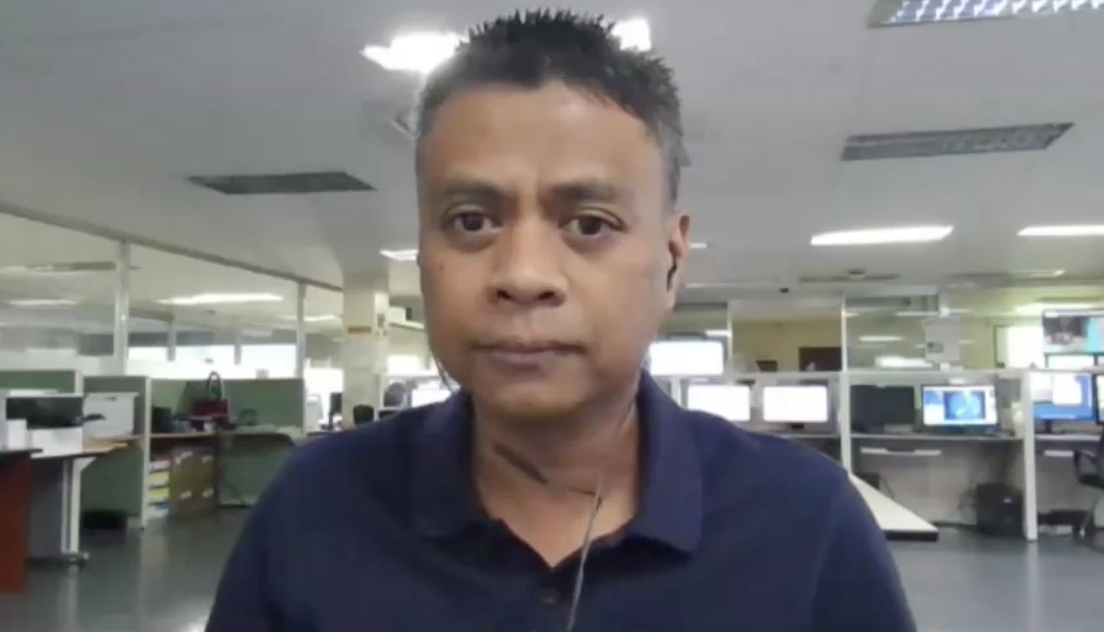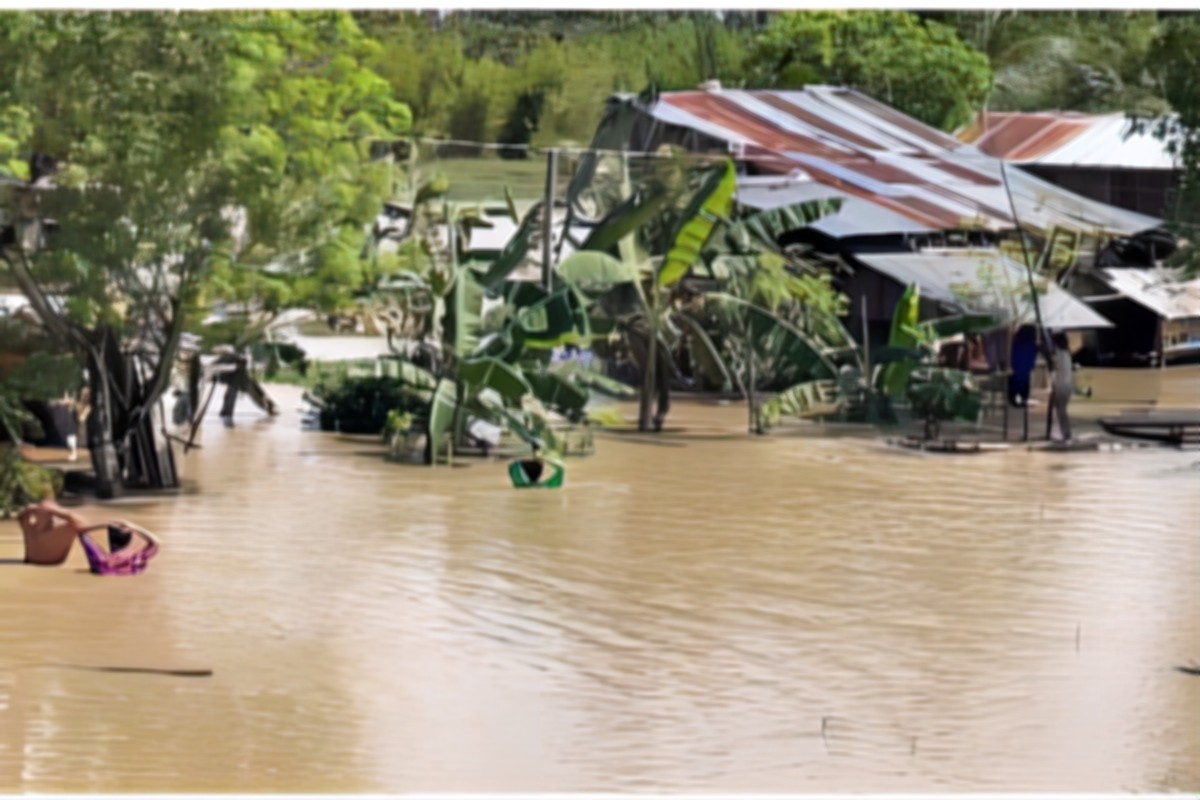(Photo courtesy: PIA-11)
The shear line, a weather phenomenon that recently affected large parts of Mindanao, has caused relentless rains with Davao City bearing the brunt of floods. It also triggered deadly landslides in Tarragona and Manay in Davao Oriental, burying homes and cutting off roads. This tragic event displaced tens of thousands of families across the region.
The human cost is also heartbreaking, with over a dozen reported fatalities, including innocent children. The floods also caused significant damage to infrastructure, including destroyed bridges, further hindering recovery efforts. While the full economic impact is yet to be determined, the agriculture industry also saw major losses, after thousands of hectares of croplands were submerged.
“[Ang] shear line [ay] dating mas kilala sa tawag na ‘tail end ng cold front’. Ito ang lugar na kung saan nagtatagpo ang malamig na hangin mula sa mainland Asia at ang mainit na hangin sa tropics,” explained Christopher F. Perez, Assistant Weather Services Chief of PAGASA’s Weather Division.
(The shear line is known locally in the Philippines as the tail end of a cold front. It occurs when cold air from mainland Asia meets with the warm air of the tropics.)

“Karaniwan kapag panahon ng amihan nabubuo ito. Karaniwan [sa] mga lugar sa silanganang bahagi ng bansa ang naapektuhan. Pero pwede ring mag extend sa gitna at minsan maging sa mga lugar sa kanlurang bahagi ng bansa,” Perez added.
(It is usually formed during the northeast monsoon season. Mostly [in] areas in the eastern part of the country were affected. But it can also extend to the center and sometimes even to areas in the western part of the country.)
The northeast monsoon season or “amihan” usually lasts from October until February or March.
“Minsan mabagal ang pagkilos nito mula hilaga-silangang bahagi ng Luzon patungo sa silangang bahagi ng Kabisayaan at minsan sa Mindanao din. Maaari itong magdulot ng mga pag-ulan na pwedeng maging sanhi ng mga pagbaha lalo na sa mga low lying areas o pagguho ng lupa sa mga lugar sa paanan ng bundok,” Perez further said.
(Sometimes, it moves slowly from the northeastern part of Luzon to the eastern part of the Visayas, and sometimes in Mindanao, as well. It can cause rains that can cause flooding especially in low lying areas or landslides in areas at the foot of the mountain.)
Shear line-induced heavy rains also battered the provinces of Surigao del Sur and Agusan del Sur that have prompted precautionary measures from local authorities, including potential evacuations and school closures.
In Surigao del Sur, Governor Alexander Pimentel granted mayors discretion to suspend classes due to the weather. Residents in San Miguel town are advised to prepare for evacuations as an irrigation dam nears capacity and a no-sail policy is in effect in Tandag City and other areas to safeguard fisherfolk.
In Agusan del Sur, on the other hand, local authorities closely monitored the rising water levels in rivers and dams. Prosperidad town's irrigation system released excess water to prevent overflow, and preemptive evacuations were recommended in Sta. Josefa municipality as water levels reach critical points. Flooding was also reported in several towns, leading to school closures across the province.
Necessary precautions
Looking forward, Perez advises the public to take preventive measures against the shear line’s dangerous effects.
“Mag-monitor sa weather advisory ng PAGASA kapag panahon ng amihan at kung may namamataang shear line,” he said.
(Monitor PAGASA's weather advisory during the monsoon season and if a shear line has been observed.)
As the northeast monsoon continues, shearing events are expected to persist, bringing heavy rainfall, particularly over the eastern Philippines. Here's how communities can stay prepared and weather the storm:
Before the rains
Families should prepare evacuation plans and emergency go bags with essentials like food, water, and first-aid supplies.
Local officials have the duty to preemptively deploy rescue teams to high-risk areas and identify safe, accessible shelters on higher ground. They should ensure flood control pumping stations– like in the case of northern Metro Manila cities Caloocan, Malabon, Navotas, and Valenzuela (CAMANAVA)--are operational, and storm drains and levees (walls) clear of debris. Public engineers should inspect the stability of slopes near communities due to saturated soil.
For individuals, avoid crossing flooded streets or swollen rivers. If landslides are a threat in your area, evacuate your home immediately.
During heavy rains
Stay alert for official updates via SMS or other communication channels from your local Disaster Risk Reduction and Management Office. Check in with neighbors and relatives to confirm their safety. Keep mobile phones charged in case of power outages.
“Maging alerto rin lalo na kung ilang araw nang umuulan sa inyong lugar bunsod ng shear line at makipag-ugnayan sa inyong lokal na pamahalaan at DRR (Disaster Risk Reduction) officials para sa mga disaster preparedness and mitigation measures,” he added.
(Also be on the alert, especially if it has been raining in your area for several days due to a shear line and contact your local government and DRR (Disaster Risk Reduction) officials for disaster preparedness and mitigation measures.)
Filipinos' resilience against the shear line and other hazards comes from both community preparedness and government action. Investing in weather forecasting, infrastructure, and robust disaster management systems is crucial for protecting lives and livelihoods. Together, we can weather the storm and build a safer future. (JVD/PIA-NCR)



